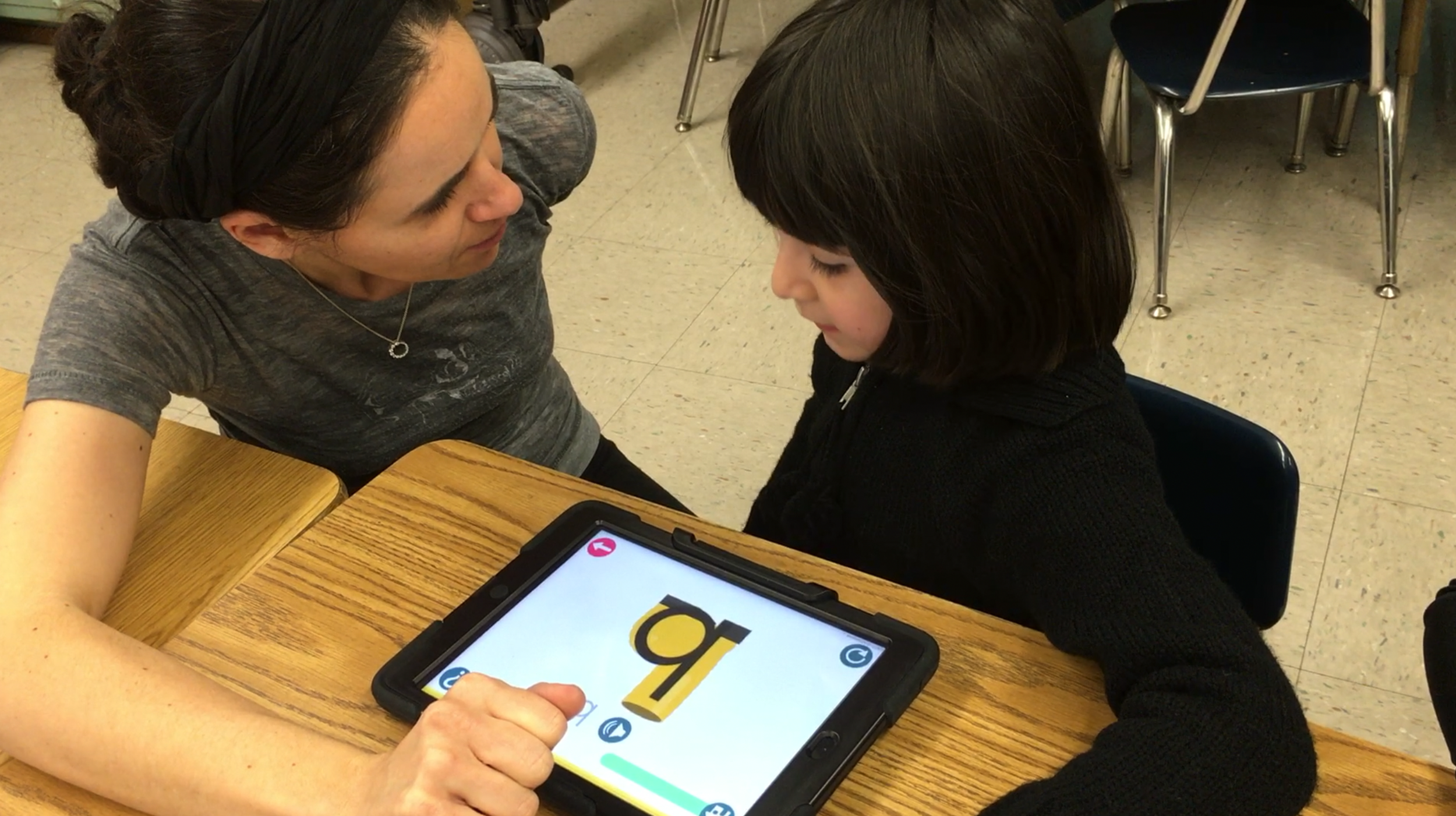The Teacher Experience
Technology Cannot and Should Not Replace Teachers!
Can today’s artificial intelligence know which kid had a bad night, missed breakfast, or was impatient and making silly errors?
Today’s Artificial Intelligence (AI) cannot assess WHY a student is struggling to read—it can barely recognize children’s speech, much less discriminate between phonemes. So-called “adaptive programs” can only respond to a student’s error by mechanistically repeating previous material—a kid’s version of Groundhog Day.
Teachers know if a student is rushing and needs to
S-L-O-W D-O-W-N.Teachers know if a student struggles with a particular Sound or Spelling.
Teachers can support EL learners when they struggle to spell words they don’t know.
Teachers can support struggling students with immediate feedback and additional time on task.
Imagine a digital curriculum that offers all the benefits of technology without replacing the teacher!
Teachers can bring lessons to life by making them relevant to students’ lives.
Teachers can excite students by setting goals and (real/physical) rewards.
And while digital programs can reward students for their accomplishments, real teachers can congratulate students for their Time and Effort—an intangible that no digital device can measure.
The CAPIT Reading Curriculum is the only digital learning platform that uses the most intelligent and adaptive instrument available: Teachers!
Our Teacher-Led Instructional Model
Explicit Instruction + Student Practice
GROUP LESSON • Daily 10-15 Minute Lessons
Direct Instruction with Small or Whole Group
-
All students, including advanced and struggling students, participate in the group lesson. Advanced students will benefit from a review; struggling students will benefit from seeing higher-level concepts that they will soon learn and master.
Teachers make each lesson fun and interactive by asking questions and encouraging peer-to-peer learning by calling students to participate.
-
CAPIT teachers conduct daily group lessons lasting about 10-15 minutes. Research informs us that students learn to read best when they receive daily explicit and systematic phonics instruction from their teachers.
Explicit phonics instruction means “saying what you mean” without leaving students guessing for themselves.
Systematic phonics instruction means having a clear, thought-out scope and sequence.
The CAPIT curriculum provides teachers with a systematic phonics curriculum; teachers provide explicit phonics instruction to their students. (CLICK HERE to explore how we help teachers teach phonics explicitly.)
-
Teachers explain new concepts and revisit old ones throughout the year, taking full advantage of the Spacing Effect (the notion that students perform better academically when given multiple opportunities to review learned material; see Carpenter, 2012; and Kang, 2016). Furthermore, modeling exposes students to content in different formats, which helps students learn and retain information.
As researchers and cognitive scientists have pointed out, we can’t expect students to work hard if they cannot “see” how to achieve their goals. However, if students have an explicit mental representation of what success looks and feels like, they are more likely to persevere in the face of difficulty. So although “struggle” is worthwhile—because it is the only way in which students improve—it is only desirable after teachers model success.
STUDENT PRACTICE •
Daily 10-30 Minutes
With Teacher Guidance and Support
-
Students progress at their own pace. The time on task is dependent on age and ability:
10 Minutes in PK
15-20 Minutes in KG
20-30 Minutes in First Grade or higher
Teachers monitor to ensure students are challenged and progressing forward, completing the desired number of lessons each day.
-
Do students need your help and support? CAPIT notifies teachers when their struggling readers need support as they complete lessons—in real-time.
-
Teachers challenge students to “talk” their way through the exercise and explain their thinking.
Teachers point to what students are reading or spelling and ask them to read it; they point to a letter and have students say the sound; they ask them what the words mean.


